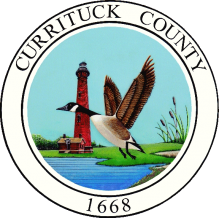Water System Interruption Questions & Answers
-
What To Do After a Water Main Break or Hydrant Flushing.
After experiencing a water main break or after periodic hydrant flushing, the water system is flushed and disinfected by the Water Department to the extent possible. In most cases you will not notice any difference in your water, though there is a chance that you may have air in the water pipes or notice a discoloration of the water.
Natural mineral scale is on the inside of the pipes, and changes in the flow of water (such as during a water main break or flushing) often cause mineral scale to slough off and discolor the water or produce particulate matter. These mineral compounds pose no health threat.
Following a water main break or flushing, the Water Department recommends you flush the COLD-water lines in your home or business. It will cost you pennies to take this important step.
- Begin with the highest tap (faucet) without an aerator (a bathtub spigot is preferred) in your home, and then open other faucets one at a time, moving from your highest floor to your lowest floor.If the dwelling is one story, use the fixture closest to where the water service enters the building.
- After 5 to 15 minutes, or until the water is clear and any air in the line is depleted, turn off your faucets and tub spigot(s) in reverse order, from lowest to highest.
- If the water does not clear, wait 30 minutes and flush the COLD water lines again.
- Following restoration of water service, check your toilets for any leaks. The temporary change in water pressure may have caused the toilet flapper to seat improperly after water has been restored.
Do Not:
- use discolored water for any purposes that require clean water, such as preparing food and beverages, medical and dental procedures, and laundry.
- flush the cold water through a faucet or tap (such as a refrigerator water line) that has a filter connected to it, or the sediment may clog your filter.
- use a hot water tap because it could draw sediment into your hot water tank.
Please contact the Water Department at 252-232-2769 if discolored water persists or should you have any questions or require additional information.
-
What is a Boil Water Advisory?
A Boil Water Advisory is a public notification informing water customers of Currituck County’s Water Department to boil their tap water before using it for drinking purposes. This is typically in response to an event that could allow contaminants to enter the water distribution system.
Such events would include:
- scheduled water line maintenance,
- water main breaks,
- small or widespread loss of system pressure,
- power outage
- or a natural disaster.
-
What should I do during a Boil Water Advisory?
Tap water should be boiled vigorously for at least one full minute prior to using. The minute starts when the water begins to bubble.
Water should be boiled for the following uses:
- drinking,
- cooking,
- ice making,
- washing dishes,
- brushing teeth,
- preparing food or drinks,
- and watering animals.
Wait for the water to cool before using or store in the refrigerator in a clean container.
Do not use water from any appliance connected to your water lines.
Boiling removes any harmful bacteria in the water that may cause illness.
-
Is the water safe for bathing and laundering clothes?
The water is safe for bathing and laundering clothes because these bacteria can only cause harm to your body if they are swallowed.
Use caution when bathing a toddler or baby. Consider giving them a quick rinse at the sink or a sponge bath since they can very easily swallow bath water.
-
How should I wash dishes during a Boil Water Advisory?
Household dishwashers are generally safe to use if the final rinse temperature reaches 150 degrees or the dishwasher has a sanitation cycle.
To hand wash dishes, use hot soapy water (you may add one tablespoon of bleach per gallon as a precaution) and rinse the dishes in boiled water.
-
How long must a Boil Water Advisory remain in effect?
An advisory will remain in effect until the water line is repaired and bacteriological sample results have determined water is safe to drink. Typically, this is a minimum of 24 to 48 hours from the time of repair.

